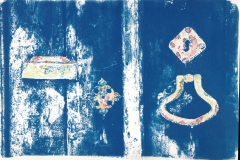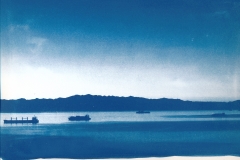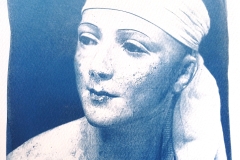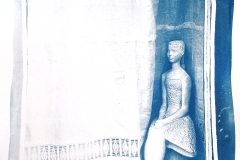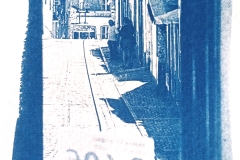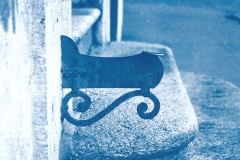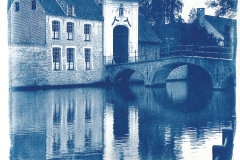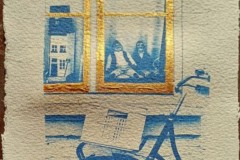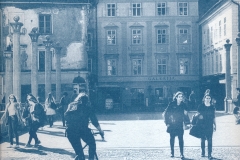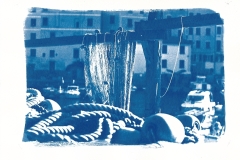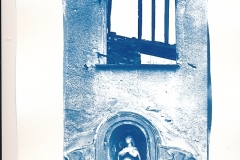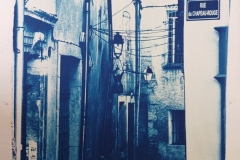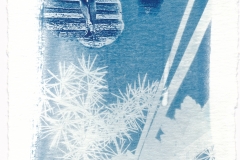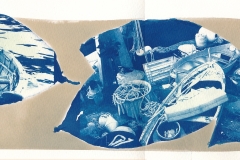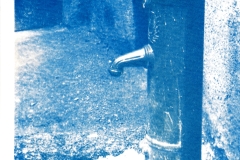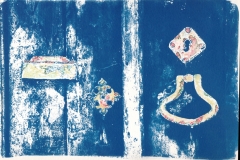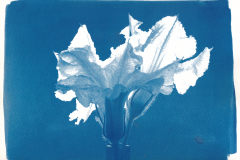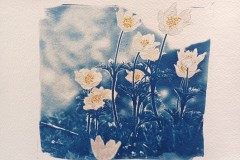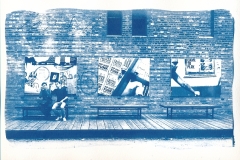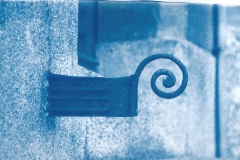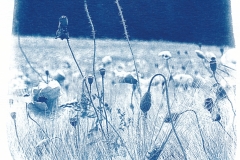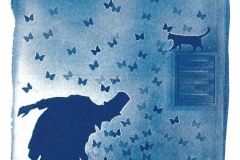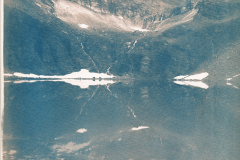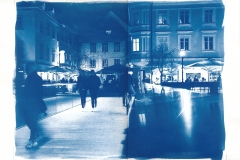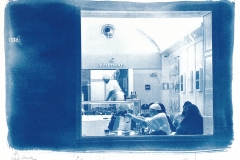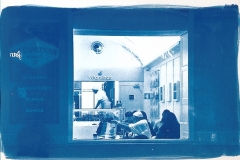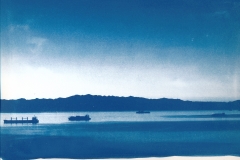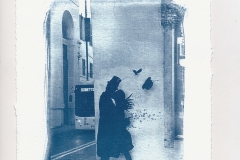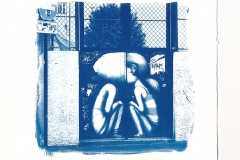La cianotipia è metodo di stampa fotografica, molto antico, caratterizzata dal tipico colore Blu di Prussia ( dal greco antico kyanos, “blu”). Lo scienziato inglese Sir John Herschel inventò questo procedimento nel 1842, a pochi anni dal varo della fotografia da parte di William Fox Talbot in Gran Bretagna e Louis Daguerre in Francia.
Il processo messo a punto da Herschel si basa su sali di ferro, precisamente il ferricianuro di potassio e il citrato ferrico ammoniacale. Questi due sali, mescolati assieme, sono molto sensibili e reagiscono quando posti di fronte alla luce di tipo solare (UV). Come fonte di UV utilizzo il sole o talvolta un bromografo autocostruito a LED.
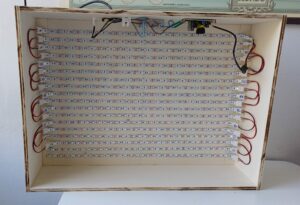
Sostanzialmente è una tecnica di stampa a contatto che richiede un negativo della stessa dimensione dell’immagine finale. Il composto deve essere steso su un supporto, tipicamente mediante un pennello. Nelle mie stampe utilizzo come supporto la carta della Canson, tipo Montval oppure la carta più pregiata Arches Platine, quest’ultima ideale per la conservazione delle opere fotografiche, in particolare i cianotipi. Ogni immagine prodotta è unica perché legata alla stesura del composto sulla carta, con tutte le imprecisioni e differenti pennellate. L’effetto risultante è bello e, se il negativo è curato, anche di notevole precisione.


